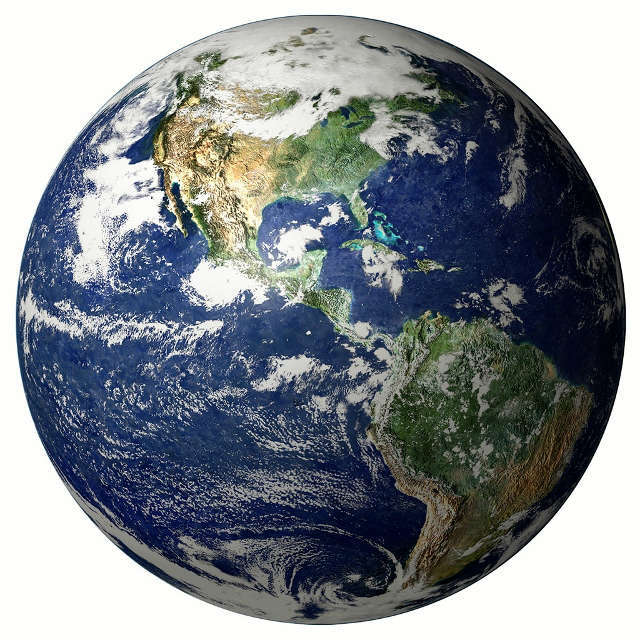May 9, 2013

Which of the Four Geothermal Systems is Best For You?
A solar heating system can help you save a lot of cash on home heating and cooling expenditures by reducing your energy use. There are a few different types of these systems, each with its own benefits and drawbacks. The best system for your home is determined by criteria like soil conditions and the size of your property.
A geothermal heating and cooling system works similarly to a traditional heat pump. It moves energy from the earth or a water body rather than transmitting heat from the air around your St. Louis home.
They are more effective than standard heaters and air conditioners because temperatures underneath the ground and underwater are more consistent than air temperatures. They last longer, are quieter, and have the potential to raise your home’s value. They’re more expensive to set up, but the savings on utility bills may make it worthwhile.
According to the Inter-NACHI, (International Association of Certified Home Inspectors), there are four geothermal systems. The type of system you choose depends on the climate of the location you live, the condition of your soil, how much land you have, and what the local installation costs are. All four of these systems can be used for both residential and commercial establishments. They include the following:
Horizontal:
A closed-loop system is typically used in a horizontal loop system. It has pipes buried in trenches underground that are filled with water or refrigerant. These systems are frequently the most cost-effective geothermal solutions for new houses or additions. Common designs are one pipe buried at 6 feet and a second one at 4 feet or two pipes buried at 5 feet and placed side by side.
This system is often the most cost-effective for residential, especially for a new home and if there is sufficient land that the home has been built on. You’ll need a huge property where you can bury hundreds of meters of pipes as well as have tons of soil that’s excellent for digging.
The Slinky method of pipe looping is used in some horizontal systems, which reduces the amount of land space necessary to construct pipe horizontally. While horizontal loops are ideal for new residences, burying pipes may necessitate the removal of mature trees, bushes, lawns, and other landscaping.
The most available layouts use either two pipes (one buried at 6 feet, and the other at 4 feet), or two pipes buried side-by-side 5 feet in the ground in a trench that’s 2 feet wide.
Vertical:
Instead of horizontal trenches, the pipes in a vertical system are placed in holes a few inches in diameter and hundreds of feet deep. There are frequently multiple holes, but they are so little that they won’t cause any damage to your landscaping.
The vertical piping in all those holes connects to manifolds, which are horizontal pipes that connect to the heat exchanger. Vertical loop systems can be put on small lots or in areas where the soil is too tough or rocky for the horizontal loop system to function.
This system is often used for large commercial buildings because the land required for horizontal loops is excluded. This system is also used where the soil is too shallow to dig a trench so the existing landscape is hardly disturbed.
The vertical system calls for holes approximately 4 inches in diameter and is drilled about 20 feet apart and 100 to 400 feet deep. Two pipes are placed in the holes and at the bottom, they are connected to form a loop. Then the vertical loops are connected to the heat pump in the building.
Pond/lake:
According to geothermal statistics, such systems do not necessitate excavating or drilling. This system runs a supply-line underground from the building to a body of water and coiled into circles at least 8 feet underground. This body of water must meet minimum volume, depth, and quality in order for it to be sufficient.
As this system is closed, the installation will necessitate some digging to connect the subsurface components to the system’s indoor elements. Because many people don’t have ponds or lakes on their property, these aren’t as frequent. But if you do decide to purchase one, it’s an excellent choice.
Open-loop:
Open-loop geothermal heat pumps typically use borehole water or another supply of pure water on the site, such as a lake. They transport this water via pipes in the same manner as a closed-loop geothermal system does, but instead of continually flowing through the same pipes, the water returns to the source.
In order for the water to circulate directly through the GHP system the system must use well or surface water as the heat exchange fluid. Once the water circulates through the system, it then returns to the ground through the well. As long as there is a sufficient amount of clean water this system will work. Also, it must conform to local codes and stipulations that affect groundwater discharge.
Because very little or no digging is required, open-loop systems are most cost-effective. They can also be used as water warmers with the correct water purification system. You’ll save space and save the costs of installing and maintaining a separate water heater this way. However, you will require a source of freshwater near your home and one that’s large enough to immerse the required pipes.
Advantages of Geothermal Energy
Quiet
The mechanism of heat transfer from above to below ground is completely silent. In the summer, you won’t have to deal with a noisy air conditioner, and in the winter, you won’t have to bother about the sound of a heater. The system’s indoor component is just as loud as a regular refrigerator.
Reliable
Geothermal energy is a dependable source of energy. The systems have fewer moving parts than most alternate energy systems, and they might even feature backup systems or computer-based controllers for more precise operation.
Clean
Geothermal systems produce no greenhouse gases. Home-based geothermal systems don’t emit any carbon dioxide into the environment, making it an environmentally friendly option.
Renewable
A geothermal system provides virtually renewable energy. To power the system, you’ll need to use some power from the grid or other sources, but it’ll only be a small amount.
Less Resource-Intensive
When it comes to the impacts on the energy grid, geothermal HVAC equipment outperforms solar and wind power. Furthermore, geothermal systems frequently have a lower environmental impact than solar panels or wind turbines.
Long-Lasting Systems
Geothermal HVAC systems have a long lifespan. Only a small portion of the system is exposed to factors that could cause it to corrode or experience other wear and tear. The majority of the infrastructure is housed either indoors or underground.
Economical
When compared to buying energy to heat and cool your home using traditional heaters and air conditioners, you’ll save 30% to 60% on heating and 20% to 50% on cooling costs. Additionally, homeowners who adopt authorized geothermal heat pumps are eligible for federal tax incentives
If you’re considering buying and installing a geothermal heat pump, you’ll want to get professional guidance first. We can answer any of your questions regarding heat pump technology and geothermal heat pumps at Scott-Lee Heating Company, and we’ll help you figure out which choice is ideal for your house or business.
We are based in St. Louis and serve the metropolitan area of St. Louis and some parts of Illinois. People from all over St. Louis have given us excellent evaluations for over 40 years. Our technicians have been there for them, whether they needed a new air conditioner or a simple furnace repair. If you need to understand more about heat pumps, we’re the best resource within the state.
Scott-Lee Heating Company has a wide variety of services, including heating, cooling, metalwork, indoor air quality, and new construction services for both residential and commercial clients. Check out our website for more information, and get in touch with us for impeccable service. We’re happy to serve you!
